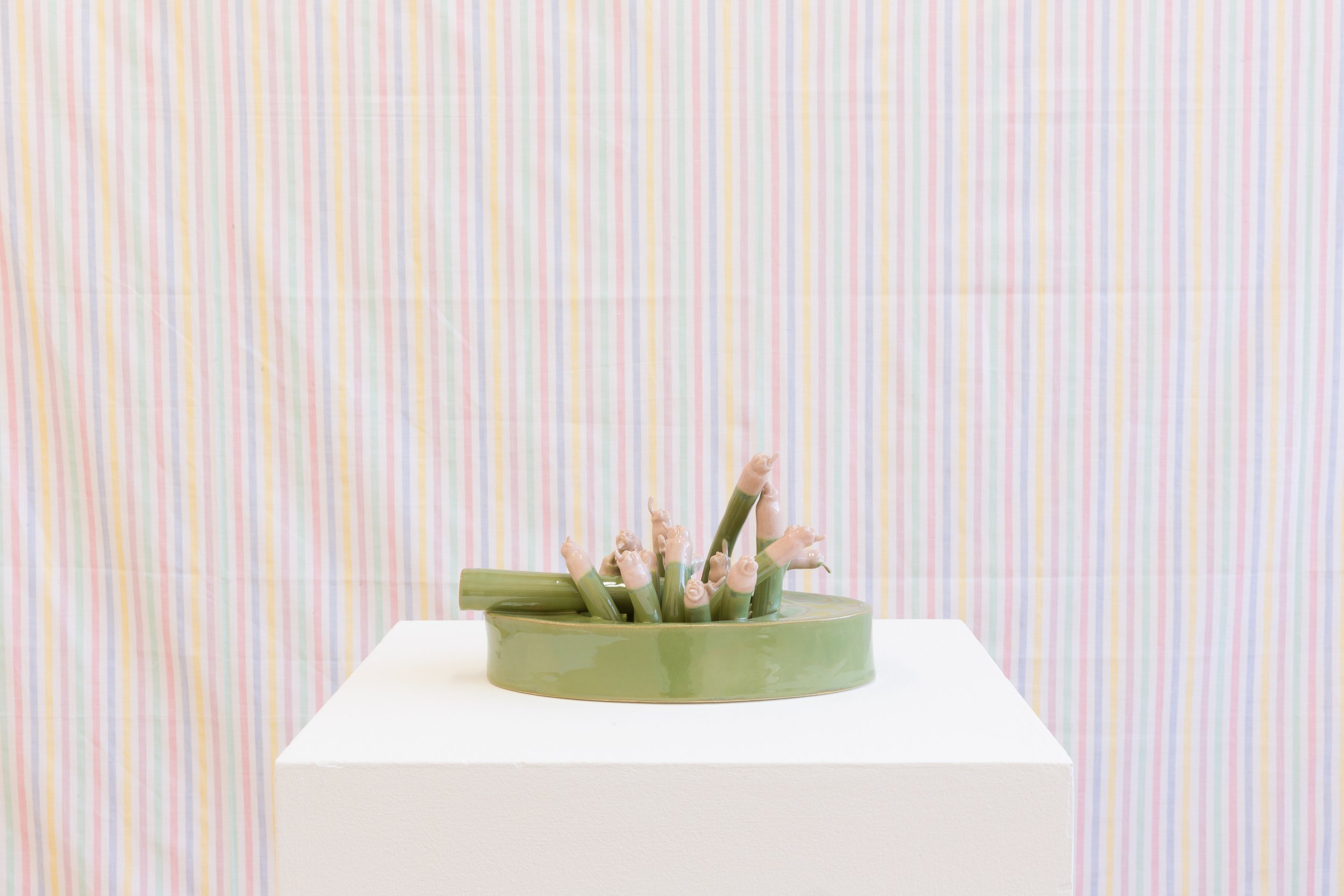
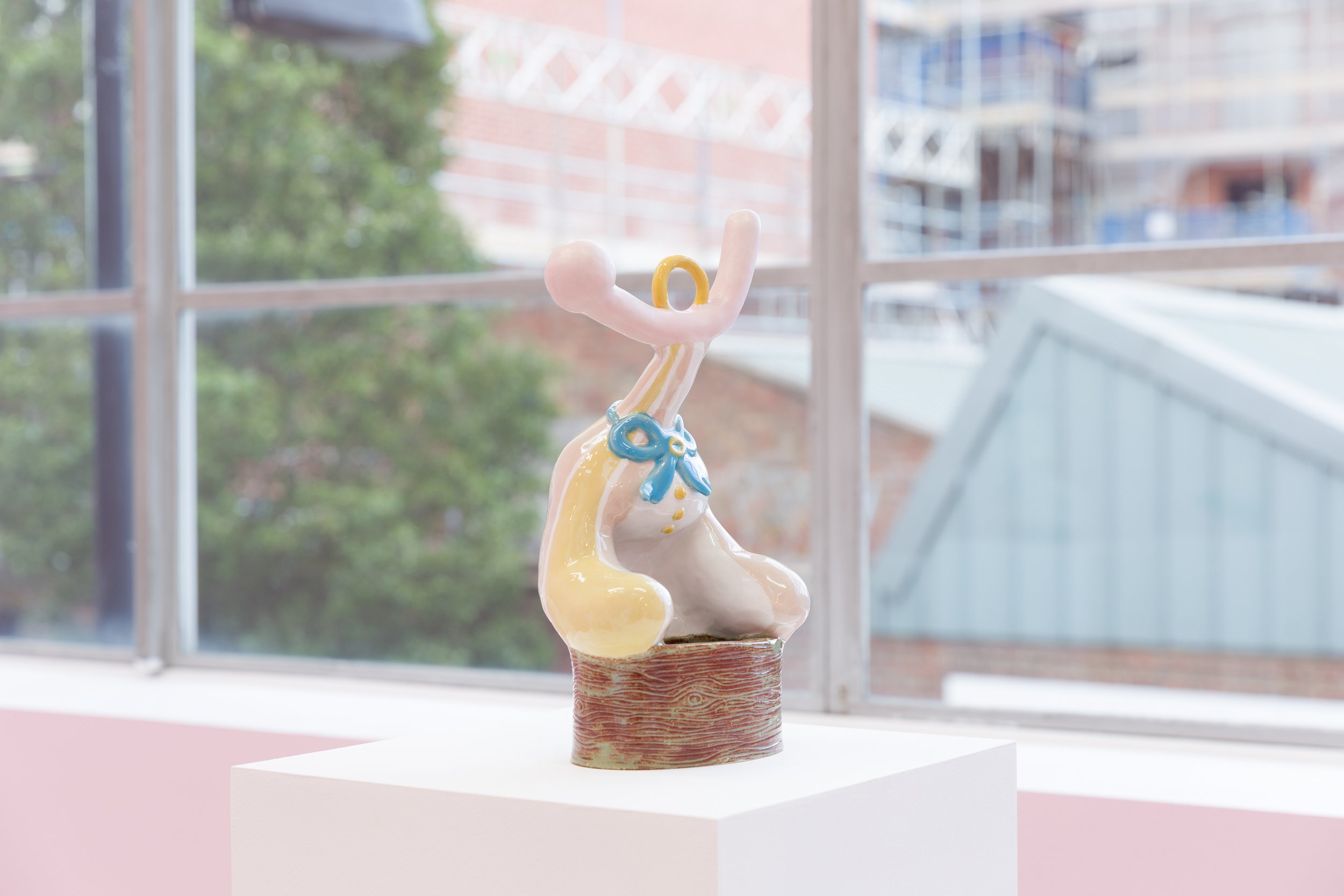
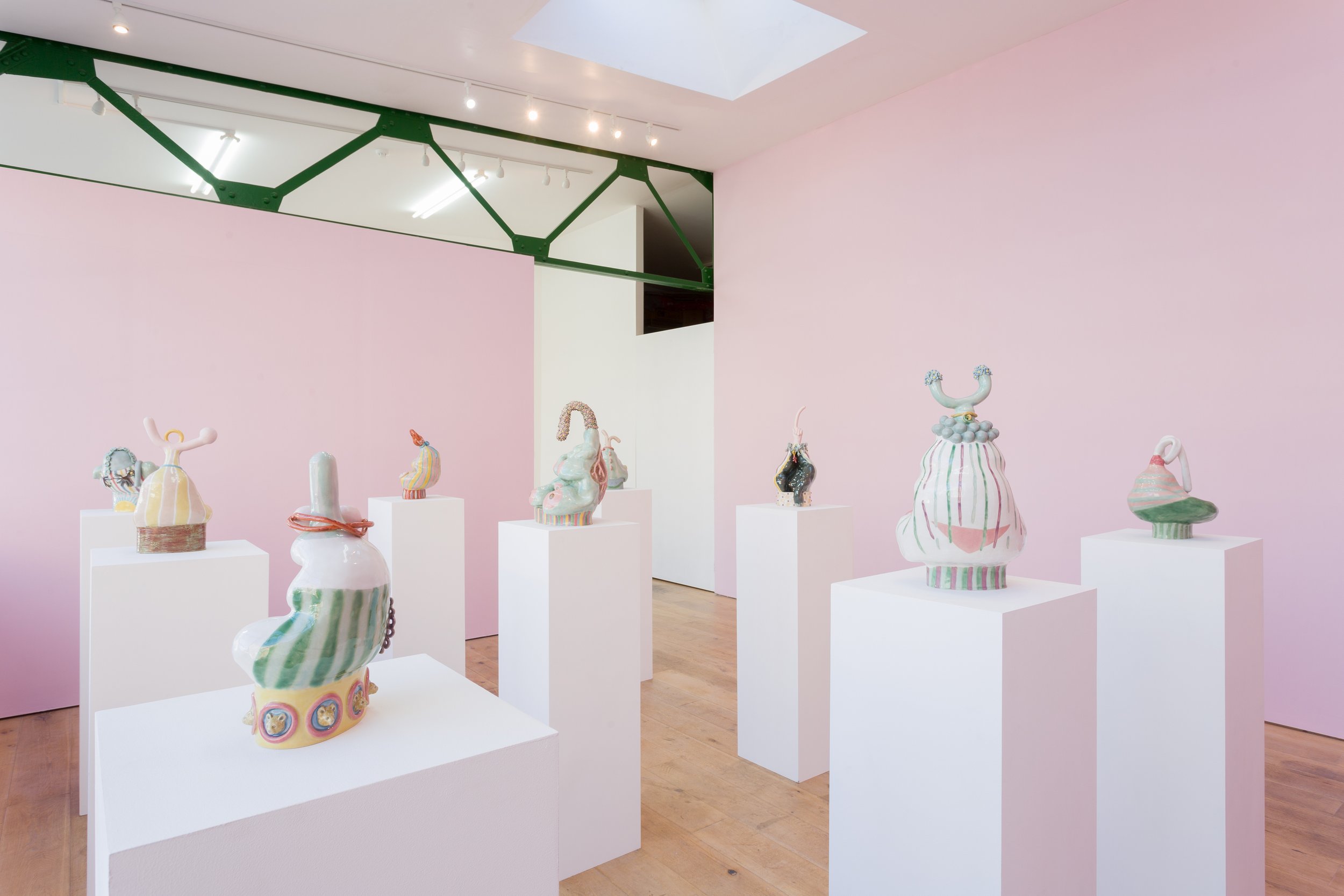
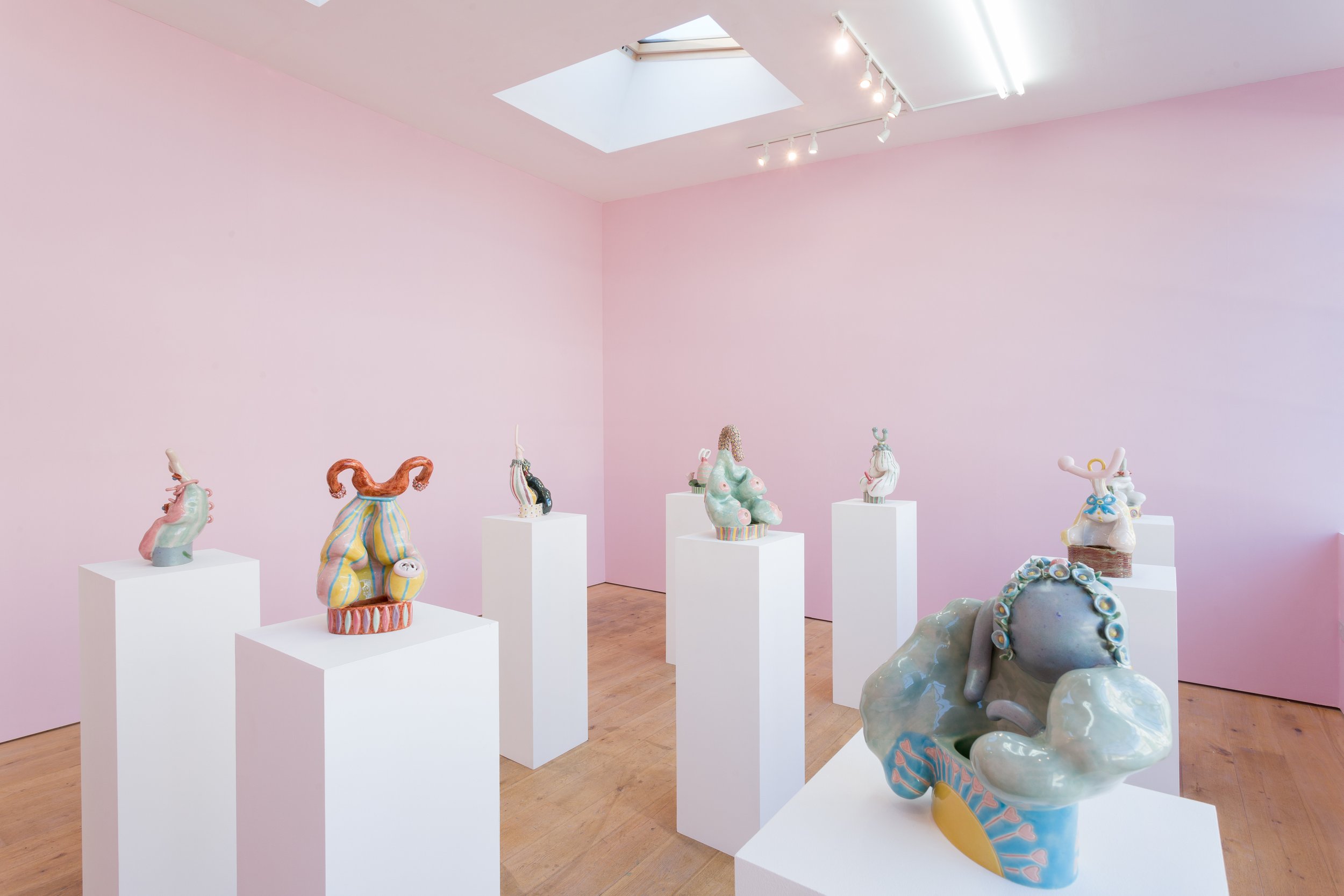
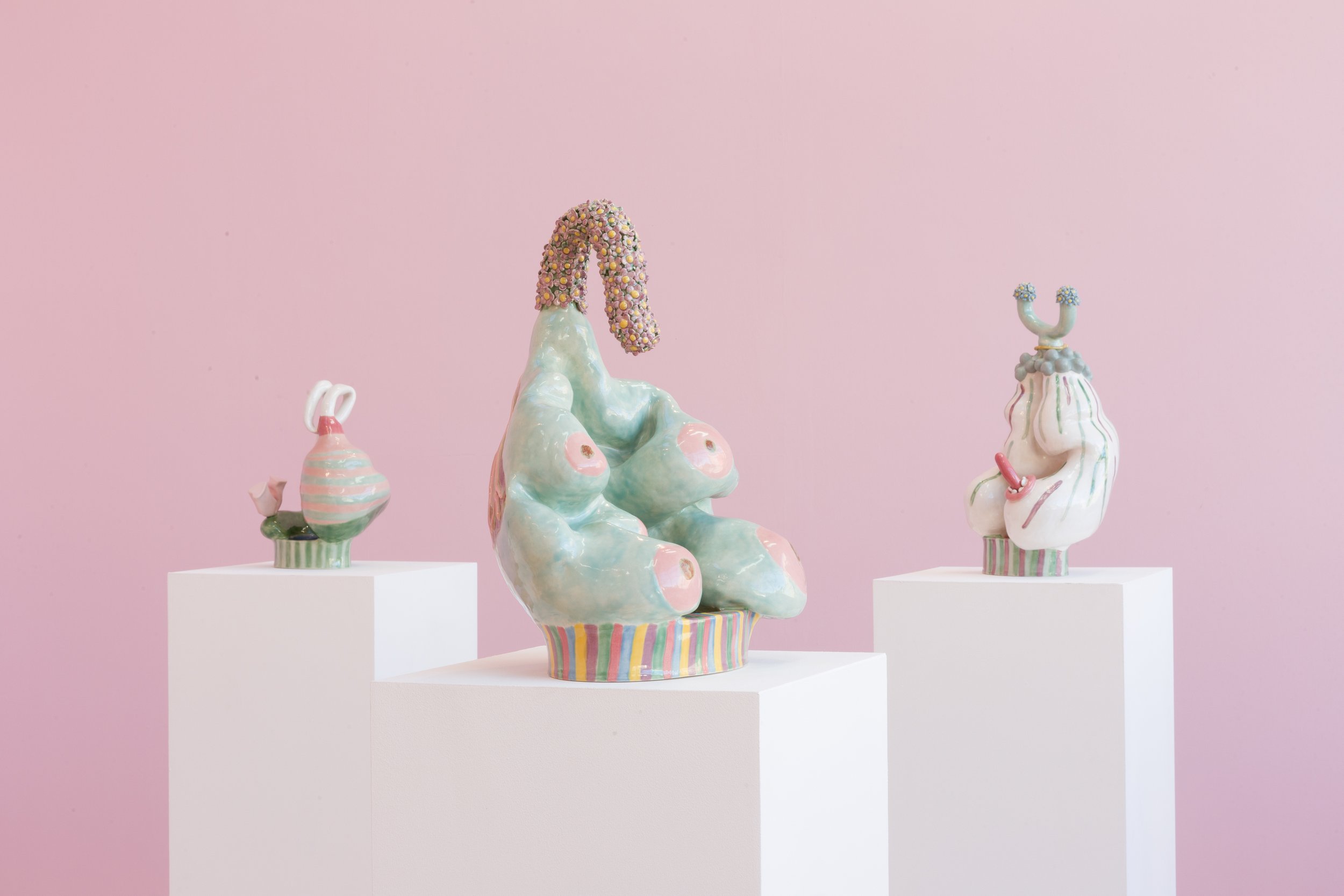
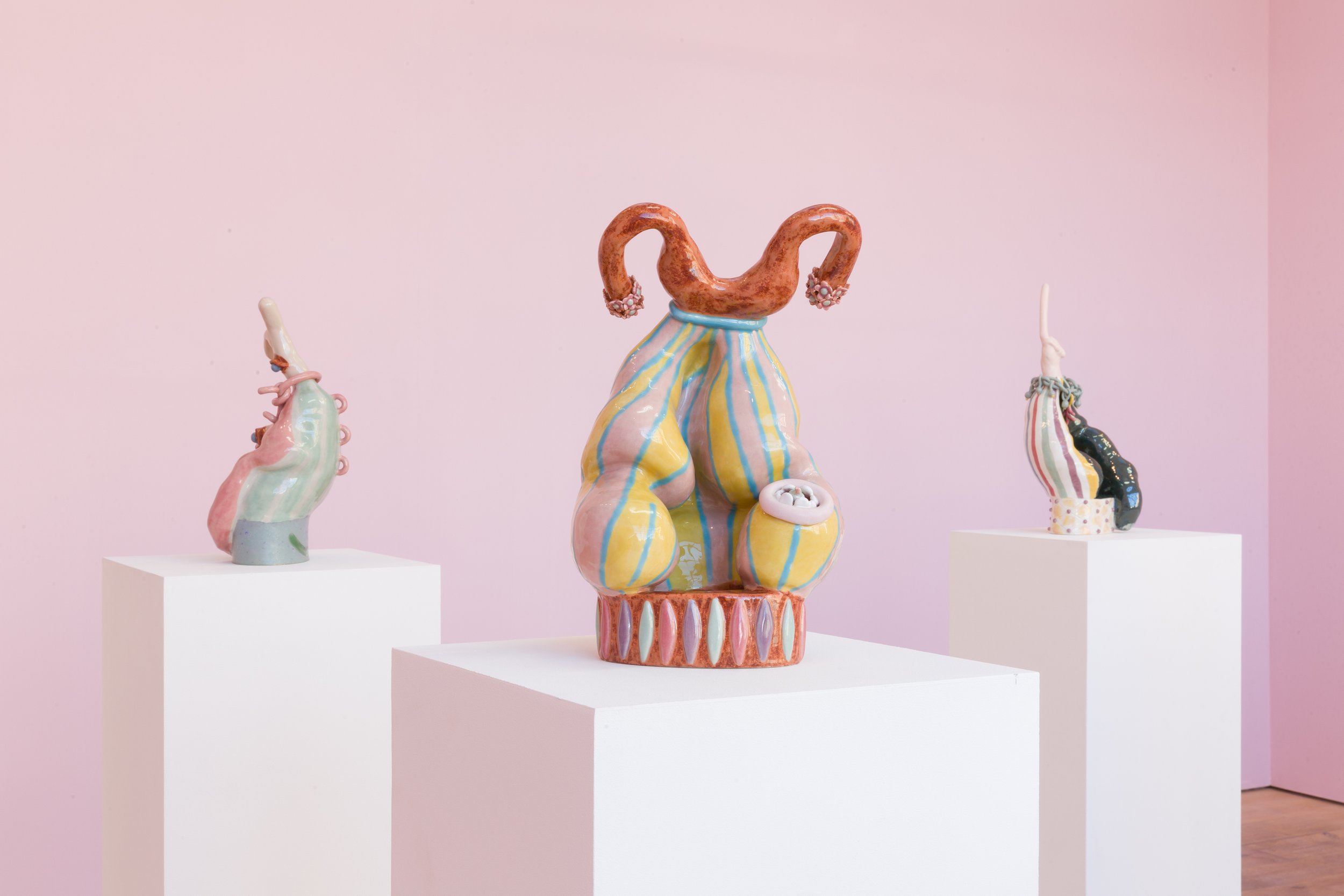

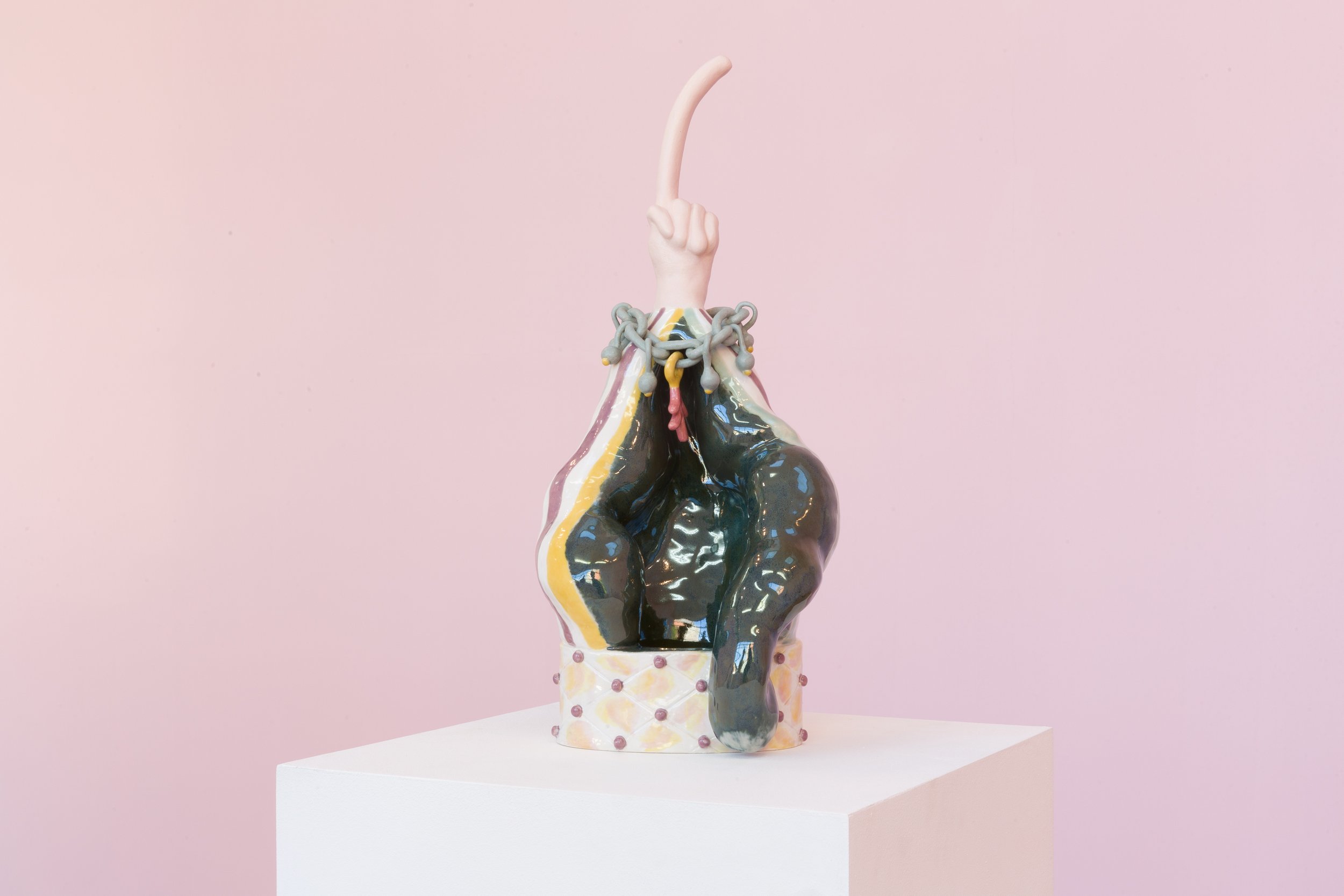
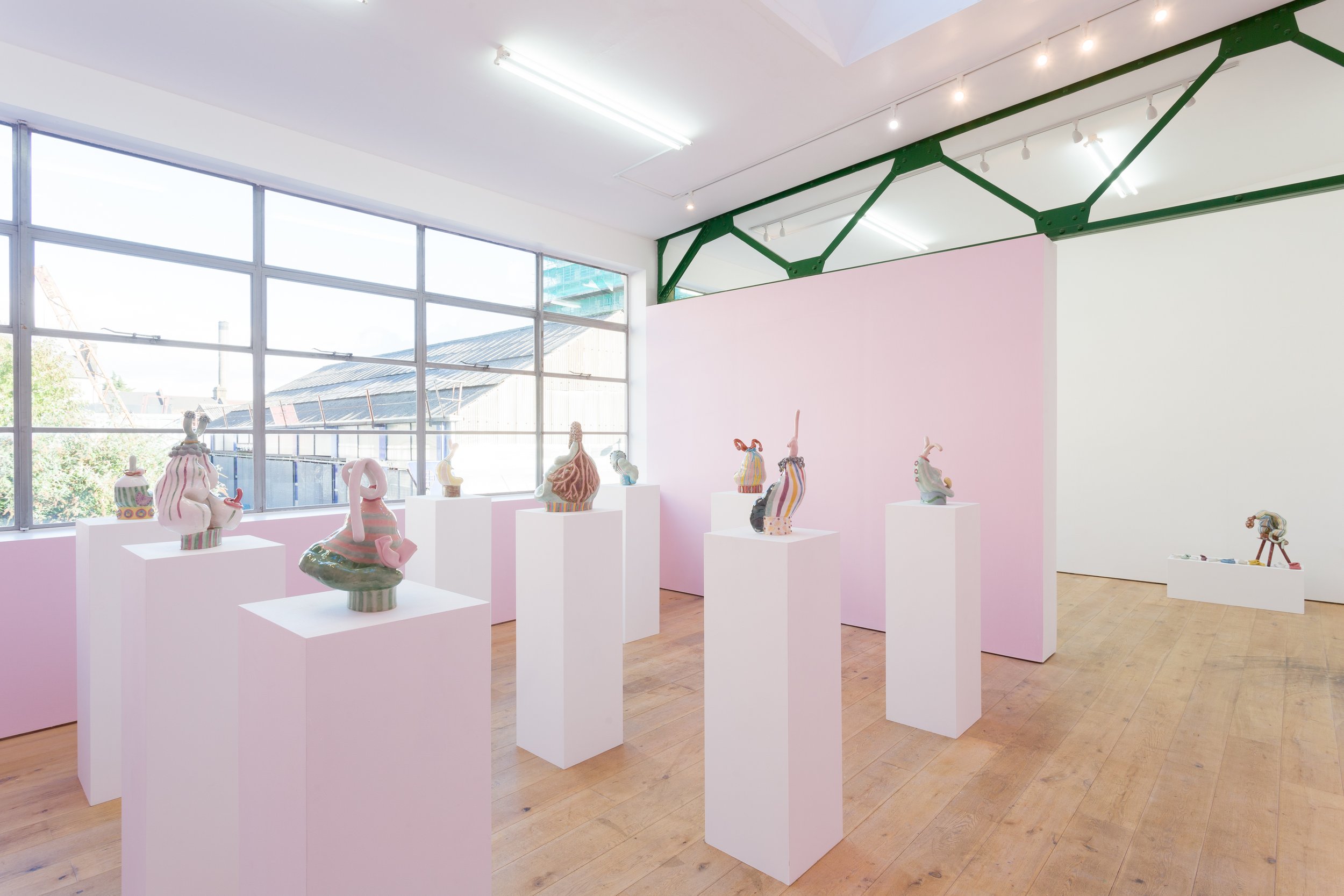
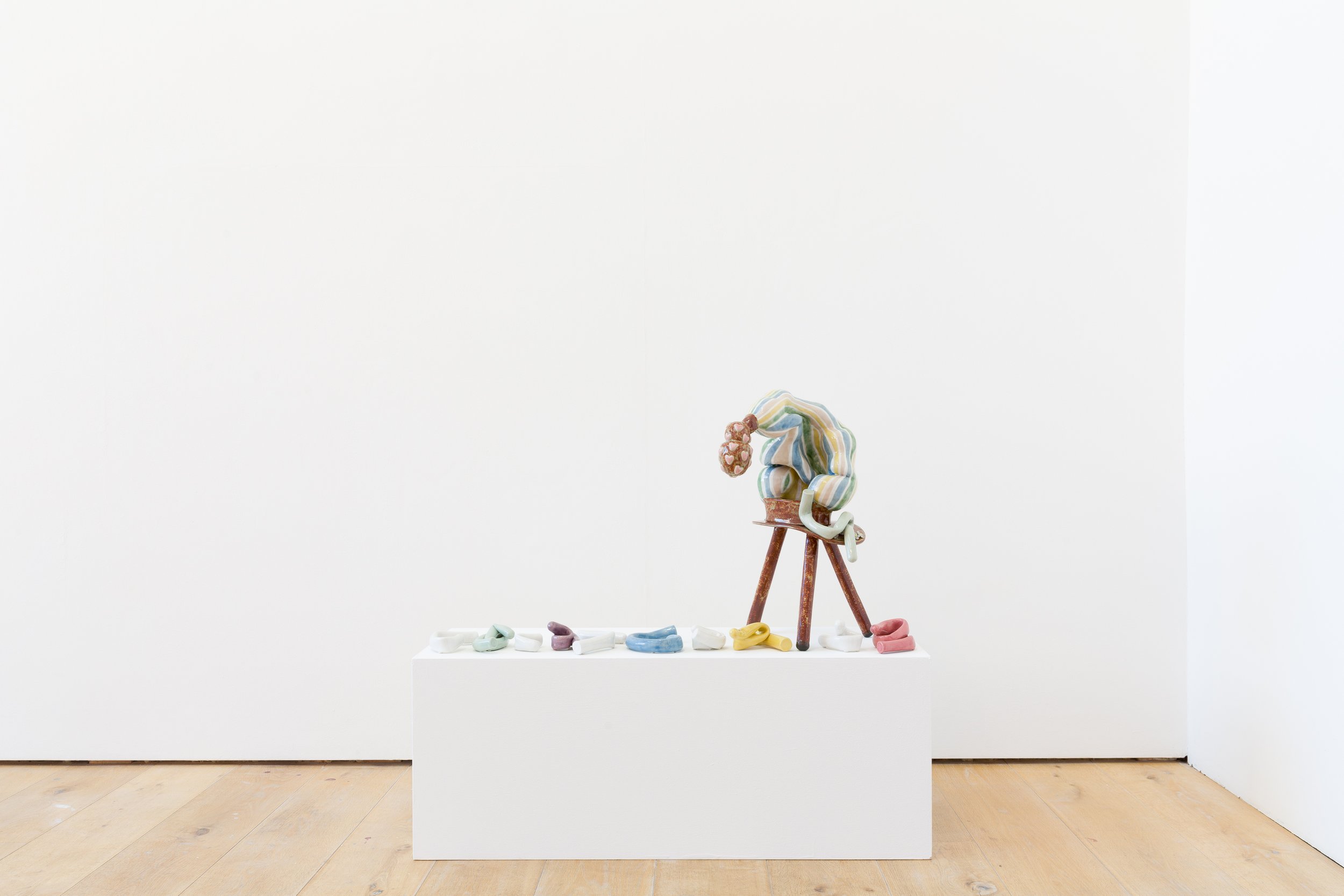
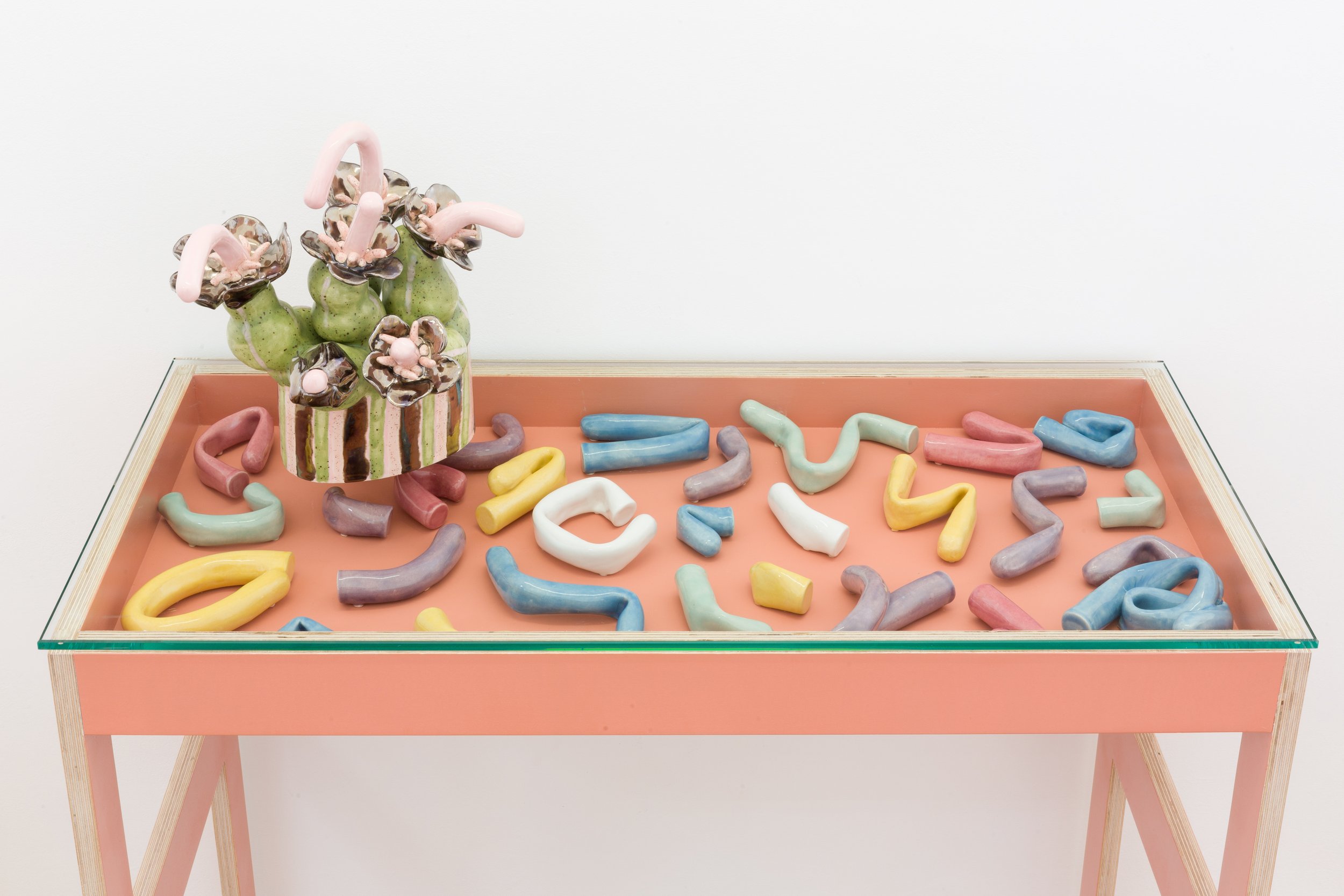

Reading Between the Lines
Exhibition text by Matthew Bowman, September 2021
Notwithstanding the famous psychoanalytic caution apocryphally attributed to Sigmund Freud—that a cigar is sometimes just a cigar, the phallic connotations of cigarettes, cigars, and pipes have long been construed since the 1920s. It’s tempting to imagine, though, that Freud might have warned against possible hermeneutic overreach: not only because misinterpretations risk denting the putative scientificity of psychoanalysis, but also because sitting there in his office in Vienna and later in London, the notoriously inveterate smoker Freud might have found any supposition that the cigar in his mouth was a displaced penis rather near the knuckle. However, if he did, for a moment, consider the possibility of the cigar as a phallic object, he might have paused for a second or two when he noticed his favourite ashtray into which he stubbed-out his cigars and hence speculated upon the psychoanalytical resonances that followed.
Such a scenario comprises the groundwork for Holly Stevenson’s ceramic sculptures. Taking as a basis Freud’s much-used ashtray and the cigars residing there, she recodes or unveils them as effectively phallic and vulvic symbols. Bathers is a good introduction to Stevenson’s procedures insofar as the ashtray is eminently recognizable as ashtray while the cigars visibly transmute into grotesque small heads with tongues as penises. Phallic imagery, however, is largely disempowered in these works: the multitude of cigarettes are redolent of broken, discarded penises—disjecta membra— which, of course, is what they are: each piece of ash tapped into the ashtray testifies to phallic diminishment. By contrast, the ashtray elements appear correspondingly “whole,” thereby troubling the customary psychoanalytic theorization of woman as castrated, defined by “lack.” Love Bomb particularly embodies—the verb is pertinent— a strikingly feminine virility, even if speaking in terms of a strict opposition between male and female is made problematic by these works.
Of all the works exhibited, Freud would have immediately recognised Manu Fica and Woodcutter and perhaps even viewed them jointly as an interpretative skeleton key. Atop the first of these is a flesh-coloured hand; protruding through its index and third fingers is a vastly elongated and thoroughly phallic thumb. This gesture is called “manu fica” (hence the work’s title) meaning “fig in hand” but also possesses more obscene resonances, functioning as a symbol like “up yours” and colloquially as “hand in vagina.” While the gesture remains in use today, with varying meanings, erotic and playful, its origins date back at least two thousand years. The Romans, for example, made sculptural versions of it, utilizing the symbol’s obscene characteristics in order to ward off the evil eye. Stevenson’s own rendering exemplifies the erotic denotations and connotations through comic exaggeration.
In his collection, Freud owned a Roman amulet based on or resembling the manu fica symbol (reference 3392 in the Freud collection). Freud’s own interest in this object corresponded with his regard for Richard Payne Knight’s 1786 book A Discourse on the Worship of Priapus that charted the history of phallic worship that had a supposed outcome—actually, a misinterpretation according to Knight—in an unusual Catholic ritual involving wax penis votives being offered by women in supplication. Knight’s book derived, in part, from research conducted by the British ambassador William Hamilton, who had collected five of these votives in 1781 and was similarly struck by the manu fica amulets worn by women in Naples. Freud refers to Knight’s book in his infamous essay on Leonard da Vinci and the amulet he collected is the model for the similarly flesh-coloured phallus and ring that comprises the top-most section of Stevenson’s Woodcutter.
The point is not about conferring value upon Stevenson’s work via any legitimacy proffered by ancient lineages. On the contrary, what is crucial here is that rather than backward looking, Manu Fica and the other works propels the past forward as part of the present’s accretions, thereby scrambling all temporal coordinates. Although Freud is popularly known as the great thinker of the psychosexual determinants of the human mind, actually underpinning his reflections was a persistent endeavour to grasp the productive effects of an incessantly displacing set of relations amid past, present, and future—memory and fantasy—both at the level of the individual and intergenerationally; that is to say, in Freud’s parlance, ontogentically and phylogenetically. Studying and collecting antiquities, changing his office into his own personal cabinet of curiosities, served as a foundation for envisaging the phylogenetic conditions of subjecthood.
Ontogeny and phylogeny are thus combined in Stevenson’s work: ancient phallic symbolism woven with Stevenson’s own personal memories; the striped patterns abundantly present throughout the sculptures derive from recollections of her childhood bedsheets. For Freud, as well as for Carl Jung, the particular and the universal polarity evident here need not be comprehended as an absolute binary opposition. Our local circumstances are always plugged into, and intimate with, what transcends the self in the here and now in such a way that the particular is incorporated into the universal rather than positioned as its antithesis. A result following from this cast of mind is also the deliberate confusion between gender differences at the level of symbolic construction. Penises and vulvic forms interpenetrate on a single vessel, sometimes ambiguously but always playfully. Woodcutter is possibly the most overtly bigendered instance here. Corollary to this, such interpenetration generates a multiplicity of physiological couplings: mouths becoming vulvas, teeth suggesting vagina dentata, eyes protruding between red lips, penises pushing out from inside mouths. Given the categorical unfixity happening, it is only too appropriate that Stevenson deploys clay and glaze, mediums defined by malleability and fluidity. Sure, the kiln firings will halt that malleability and fluidity, but Stevenson’s work halts them at the pinnacle of unfixity.
We can imagine, then, Stevenson’s works occupying spaces in Freud’s office or that office transferred into and as Sid Motion’s gallery. Not entirely comfortably, to be sure, insofar as Freud’s aesthetics tastes mostly did not extend to the art contemporaneous with him. He generally suspected Surrealism, for example, of having little truck with his notion of the unconscious despite its professions. But Freud might likely also have been unsettled by the overturning of gender hierarchies. Yet such discomfiture results from an implicit recognition that such possibilities were already unconsciously conceived by him, as if Stevenson’s ceramic pieces were subjecting Freud to psychoanalysis. It was on a similar basis that many feminists sought to radicalize Freud’s insights rather than marginalize them. Stevenson, in that respect, with her contemporary grotesques, delightfully contributes a further way to read Freud between the lines.